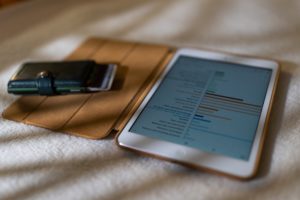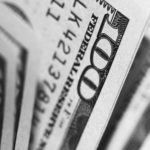Have you heard of Robinhood’s checking account? How does 3% interest on a checking account sound? Pretty good – right? Well, that’s what it promises. On the other hand, you may be thinking that you’re already doing better than that if you take into consideration the tax-free savings and various cashback and loyalty rewards you already earn on such things as:
- Reward points for free drinks, food, and merchandise
- BOGOs
- Credit cards that offer 3% cashback on gas purchases
- Credit cards that offer 4% cashback on restaurant tabs
- Health Savings Accounts (HSA – which is not only pre-tax savings, but can also be invested)
- Cash off fuel purchases
- Cashback rewards for travel
Still, the Robinhood Checking Account sounds very enticing with these additional perks:
- No monthly fees
- No foreign transaction fees
- No overdraft fees
- No ATM fees at over 75,000 locations
- Accounts insured up to $250,000 by SIPC*
How Was Robinhood Going to Pay for This?
Does it still sound attractive? Continue reading to learn more.
The Robinhood Checking Account, a digital checking account, was structured to invest your money in T-Bills (Treasury securities). However, short-term Treasury securities are yielding far less than 3% at this time, which means that Robinhood would be operating at a loss. Few companies can operate on sustained losses. So, was this an introductory offer? Robinhood claims it was not.
*According to a report by Forbes, the Robinhood account was not insured by the SIPC. Additionally, the Robinhood checking account has been exposed as a mere money market account.
Offering High-Yield Interest
To continue running at a loss simply does not make good business sense. Companies exist to make a profit. When Megabanks are offering 1.5% interest or less, it does not make sense that the Robinhood Checking account would offer such a high yield of 3%.
Today’s consumers are better-informed and look for every means to stretch their hard-earned dollars. Realistically, the 3% interest can be viewed as Robinhood’s cashback reward. Although Millennials tend to bank with the Megabanks, they pledge no loyalty to any single bank. Instead, they seek out banks that provide the tools and conveniences that fit their lifestyle.
Profitability of the Robinhood Checking Account
First, they charge consumers fees for online banking privileges; megabanks now absorb many of the costs associated with online banking, on average $13-$15 per user per year. Marketing costs to attract and keep accounts run into the multi-million-dollar range. For example, Marcus, a Goldman-Sachs product, spends approximately $80 million a year on marketing. Would Robinhood have the same kind of resources to compete?
Checking Accounts as Temporary Repositories
Most Americans (about 94%) have checking accounts and use them as temporary repositories for funds that will go out to pay bills and other costs of daily living. In addition to these accounts, many divert funds into some pre-tax savings, such as HSAs and 401k plans. Would it surprise you to learn that there is (conservative estimate) $2 billion (or more!) sitting in individual Starbuck accounts?
According to recent research, savings tools such as Stash and Acorns provide a means for consumers to save spare change without feeling the pinch. It is estimated that over 7.2 million of these types of accounts were opened last year, helping individuals save about $5.6 billion. Robinhood’s high yield of 3% sounds like a great offer; however, most people want help saving money regardless of the rate.
The convenience of Person-to-person payments apps is trendy. PayPal, Venmo, and Square Cash, the top three P2P apps, will process several billion dollars of diverted personal funds, supporting the introduction of several other types of banking products. Here again, the Robinhood account may not be able to compete.
We all welcome new and better financial services and products, plus those products attract more customers, creating a more stable bank. Although the Robinhood Account has been shelved, for now, the firm already has a brokerage service in place that offers investments in Stocks and Funds, Options, Gold, and Cash Management.
Robo-advisor tools are becoming increasingly popular, as well. For those who want to invest, who do not want to deal with a financial advisor, and who are apprehensive in a total do-it-yourself environment, Robo-advisors have become widely accepted. These automatic and algorithmic investing platforms help you navigate the complexities of investing in a user-friendly platform.
The Robinhood Checking Account Suffers “Bank Displacement Syndrome”
The success of the Robinhood account is predicated on a significant exodus of unhappy consumers from traditional banks – the “Bank Displacement Syndrome.” But according to a poll by JD Powers, Millennials are equally satisfied with large banks as they are with smaller ones. Once again, it is all about the tools and conveniences the bank has to offer.
Perhaps the world at large isn’t quite ready for digital bank accounts and cryptocurrencies. It appears that traditional banking is here to stay, at least for a while.







